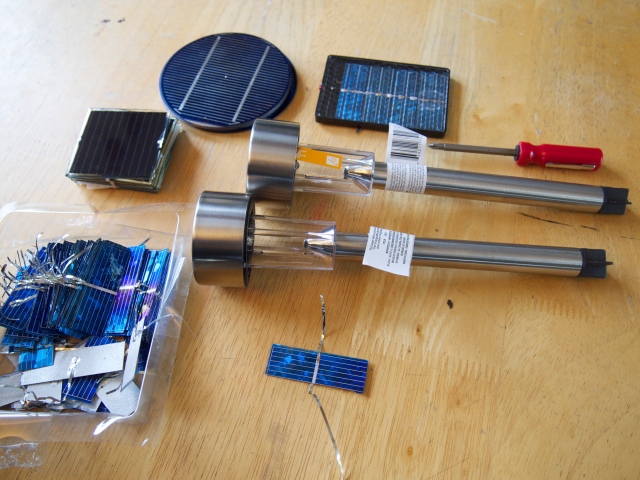Solar cells convert light into electricity. Sunlight works really well with these photovoltaic cells, but other types of light work also. Halogen and Incandescent light works better than Fluorescent light with solar cells.
Older solar cells were often polycrystalline, and the surface of those were usually blue. The newer ones don’t have the same visual texture, and have higher output. Usually, the darker surface of the cells is an indicator of higher amperage output from the cells. Solar panels can be wired in series to increase voltage, or wired in parallel to increase amperage.
The garden lights have an interesting circuit. When you buy them in the store, they may turn on their LED when light hits the solar cells as they did for me. After you pull the tab out, and connect the battery to the circuit, they only light the LED when the solar cell is in the dark. Inside the housing of the walkway lantern is a small circuit board between the solar cell and the battery. This circuit keeps the LED from using up the electricity from the solar cell during the day, and when the input voltage falls below a threshold, the electricity stored in the battery is sent out to do the work of lighting the LED. It may be that the circuit has a voltage booster, since the 1.2 volts of a rechargeable battery is probably not enough to make an LED shine.
There are photos of this project.
